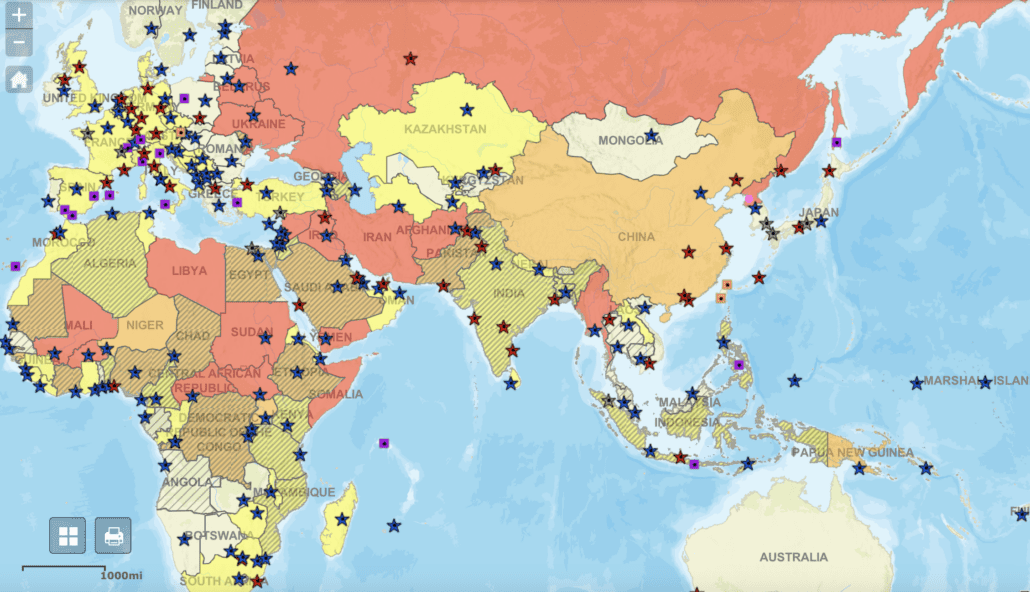
If you’re taking a meeting outside of the U.S., there could be local risks involved that may not be intuitively obvious. Turn to the U.S. State Department for their latest advisories.
The U.S. State Department’s travel.state.gov website keeps a constantly updated list of travel advisory levels for more than 200 countries, from Anguilla in the Caribbean (Level 1, exercise normal precautions) to Mexico, where six states currently are designated at the highest risk level, (Level 4, do not travel).
While no new countries have been added to the highest risk category recently, the State Department has updated travel advisory levels for more than 10 countries over the past three months to update information about specific areas or new or increasing risk factors.
There are 20 or so countries that currently are at Level 4, meaning there is a high risk for traveler safety due to civil unrest, kidnapping, terrorism, health factors or crime, and where the U.S. government may have “very limited ability” to come to the aid of a traveler who runs into trouble.
Some of the countries on the “do not travel” list, such as Sudan, have been there for years. Myanmar and Russia, which also are not new on the Level 4 advisory list, have had their status recently updated or renewed based on the risk of civil unrest, wrongful detention or health concerns (Myanmar) and terrorism and kidnapping (Russia). Afghanistan, which also has been struggling with armed conflict, civil unrest and more and whose U.S. Embassy in Kabul shut down operations when the U.S. pulled out of the country in August 2021, also remains at the highest risk level.
But chances are, these countries probably were already on your no-go list for at least near-term meetings and events. However Mexico, a popular destination for U.S.-organized meetings and events, also has six of its 32 states currently under a Level 4 travel advisory, including Colima, Guerrero, Michoacan, Sinaloa, Tamaulipas and Zacatecas, mainly due to risks of crime and kidnapping.
Among the countries currently assessed at Level 3 is China, which has been under an advisory since late in 2020. While COVID-related restrictions have eased in China, the travel advisory remains in effect due to a resurgence in cases, in addition to crime and other risks. Peru, which remains in political upheaval since its democratically elected president Pedro Castillo was ousted, also is on the Level 3 travel advisory lists, as are both Nigeria and Uganda.
There are 71-plus countries—including Brazil and the Dominican Republic—on the current Level 2 list, meaning travelers should “exercise increased caution.”
While there are never any guarantees that a meeting or event won’t be affected by a late-breaking situation that triggers a higher level of travel advisory between when it’s booked and when it takes place, savvy international planners keep the travel.state.gov website in their bookmarked-site list, or sign up for one of the several methods the State Dept. has available to receive updated safety and security information. It also is a good idea to check regularly with that country’s U.S. embassy and local partners in the destination to keep current on what’s happening on the ground at your host destination.
You May Also Be Interested In…
The Best Advice for Staying Healthy When You’re On the Road
Flight Trackers: Our 5 Favorites
Prevue’s Top 10 Packing Tips of All Time










